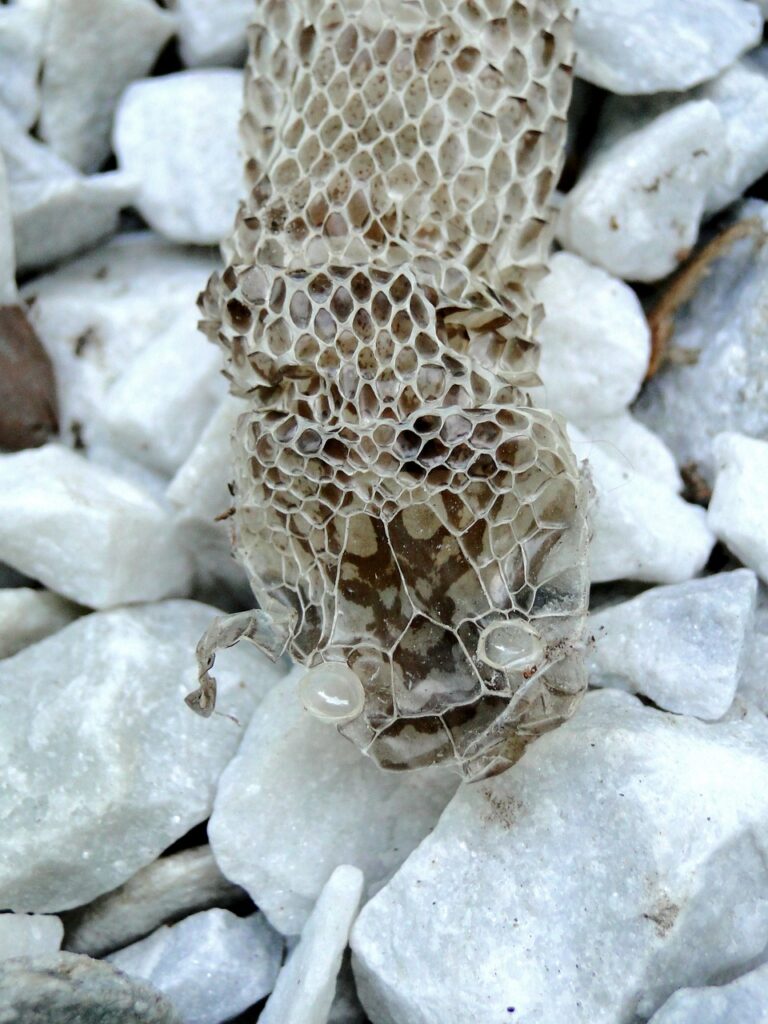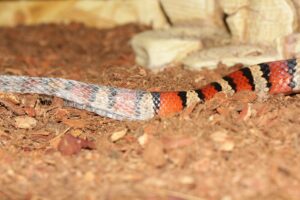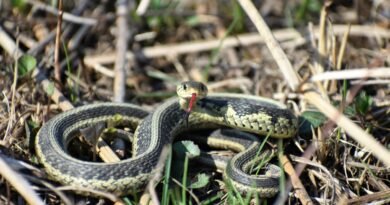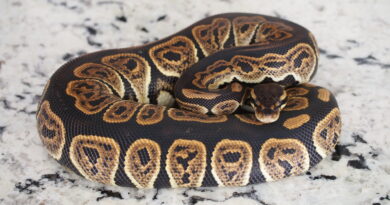Why Do Snakes Shed And What To Do When Your Snake Starts Shedding
Have you ever wondered why snakes shed their skin? It’s a fascinating process that snakes go through for various reasons. In this article, we will explore why snakes shed and provide you with helpful tips on what to do when your own snake starts shedding. Whether you are a seasoned reptile enthusiast or new to owning a snake, understanding the shedding process is essential for the health and well-being of your scaly companion. So, let’s dive into the world of snake shedding and discover how to ensure a smooth and successful shedding experience for your snake.

Why Do Snakes Shed
Snakes shed their skin regularly for various reasons. The shedding process, also known as ecdysis, allows snakes to grow, remove old and damaged skin, and keeps their outer layer in optimal condition.
The Shedding Process
When a snake sheds, it goes through a process of shedding its old skin. This process begins with the loosening of the skin around the snake’s head, followed by the shedding of the skin in one continuous piece, starting from the head and moving towards the tail. The snake’s new skin develops underneath the old layer, and once the shedding is complete, the snake reveals a fresh, vibrant skin.
Reasons for Shedding
Snakes shed to accommodate growth. As they grow, their skin becomes too tight, necessitating the shedding process. Shedding also helps snakes remove any parasites or ticks that might be present on their skin. Additionally, shedding enables snakes to repair any damaged or worn-out skin, ensuring that their outer layer remains intact and functional.
Frequency of Shedding
The frequency of shedding varies among snakes and is influenced by their age, size, and overall health. Young snakes tend to shed more frequently than mature ones because they grow faster. On average, snakes shed their skin every four to six weeks. However, certain factors, such as the snake’s diet and environmental conditions, can affect the shedding frequency.
Signs of Impending Shedding
Before a snake begins shedding, there are several noticeable signs to watch out for. One common sign is the appearance of “cloudy” or “milky” eyes. As the new skin develops underneath, the snake’s eyes become cloudy, impairing their vision temporarily. Another indicator is dull and dry-looking skin. The old skin loses its vibrant sheen and becomes opaque. Loss of appetite is also common during shedding, as the snake’s focus shifts towards shedding its skin. Lastly, increased aggression may occur due to discomfort or sensitivity during this period.
Physical Changes During Shedding
During the shedding process, snakes undergo specific physical changes that are important to understand as a snake owner.
Cloudy Eyes
One of the most noticeable physical changes during shedding is the cloudiness of the snake’s eyes. The eyes become opaque or milky as the old skin is pushed off. This cloudiness is a natural and temporary condition that typically lasts for several days.
Dull Skin
As the shedding process progresses, the snake’s skin loses its luster and appears dull. The old skin becomes dry and opaque, indicating that the snake is preparing to shed.
Loss of Appetite
During shedding, snakes often experience a decrease in appetite. This is normal and expected, as their focus shifts towards shedding their skin. It is important not to force-feed the snake during this time, as it may cause unnecessary stress.
Increased Aggression
Some snakes may exhibit increased aggression while they are shedding. This can be attributed to the discomfort or sensitivity they may feel during this time. Snakes may display defensive behaviors or become more irritable.

Preparing for Shedding
As a snake owner, it is crucial to prepare and create an ideal environment for your pet’s shedding process. Here are some tips to help you prepare:
Maintaining Optimal Habitat
Ensure that the snake’s enclosure provides the ideal conditions for shedding. The habitat should be set up with appropriate temperature and humidity levels, as these factors significantly influence the shedding process.
Providing Adequate Moisture
Proper humidity is essential for facilitating shedding. Make sure to provide a moist hide or a shedding box for your snake. This will create a microclimate with higher humidity, allowing the snake to easily shed its skin.
Avoiding Stressful Situations
Stress can hamper the shedding process and potentially lead to complications. Avoid any sudden changes in the environment, such as loud noises or excessive handling, as these can cause stress to the snake. Maintain a calm and stable environment to support the shedding process.
Assisting the Shedding Process
While snakes are generally capable of shedding their skin on their own, there are a few ways you can assist them if needed.
Soaking in a Misting Box
If you notice that your snake is having difficulty shedding, you can create a misting box by placing a moistened substrate material, such as sphagnum moss or damp paper towels, inside a small container. Allow the snake to spend time in the misting box, which will help increase humidity and facilitate the shedding process.
Humidity Chamber Technique
Another method to assist shedding is by providing a humidity chamber. This can be achieved by placing the snake’s enclosure inside a larger container with damp substrate or adding a container of water inside the enclosure. The increased humidity will help soften the old skin, making it easier for the snake to shed.
Gentle Skin Exfoliation
In some cases, you may notice areas of retained skin after shedding. If the stuck skin doesn’t come off naturally, you can gently assist by using a soft cloth or your fingers. Be careful not to pull or force the skin off, as this can harm the snake. Seek professional help if you encounter any difficulties or if the snake appears distressed.

Do’s and Don’ts During Shedding
When it comes to handling your snake during shedding, there are important do’s and don’ts to keep in mind:
Do Monitor Shedding Progress
Regularly observe your snake to track its shedding progress. Take note of any abnormal or prolonged shedding periods, as this may indicate an underlying health issue.
Don’t Attempt to Remove Skin
It is crucial not to attempt to manually remove the old skin from your snake. The snake will naturally shed the skin on its own, and forcefully removing it can cause injuries or stress.
Do Provide Fresh Water
Ensure that your snake has access to fresh, clean water during the shedding process. Hydration is essential for a successful shed.
Don’t Handle the Snake Excessively
Avoid excessive handling of your snake during shedding, as it can agitate or stress the snake. Give your pet the space it needs to complete the shedding process comfortably.
Common Shedding FAQs
Here are some frequently asked questions about shedding in snakes:
How long does shedding take?
The duration of shedding can vary among snakes, but it typically lasts between 7 to 14 days.
Can I assist in removing the skin?
While it is generally recommended to let snakes shed naturally, you can assist in removing any retained skin that doesn’t come off naturally. However, it is crucial to proceed with caution and seek professional help if unsure.
What if my snake refuses to eat during shedding?
It is common for snakes to have a reduced appetite during shedding. Offer food as usual, but if your snake refuses, do not force-feed. Resume feeding once shedding is complete.
Will shedding affect the snake’s temperament?
Some snakes may display increased aggression or irritable behavior during shedding due to discomfort. It is important to respect their space and avoid unnecessary handling until the shedding process is complete.
When to Seek Veterinarian Assistance
While shedding is a natural process for snakes, there are situations where veterinary assistance may be necessary:
Retained Eye Caps
If your snake fails to shed its eye caps completely, it can lead to retained eye caps. This condition requires professional assistance to ensure the eye caps are safely removed.
Incomplete Shedding
If your snake has difficulty shedding its skin completely, resulting in patches of stuck skin, it is best to seek veterinary assistance. Incomplete shedding can lead to complications if not properly addressed.
Abnormalities or Infections
If you notice any abnormalities, wounds, or signs of infection during the shedding process, it is crucial to consult a veterinarian. These can be indications of underlying health issues that require immediate attention.
Tips for Shedding Prevention
To minimize shedding-related issues, here are a few tips to prevent complications:
Maintain Consistent Habitat Conditions
Consistency in temperature and humidity levels is crucial for shedding. Regularly monitor and adjust the habitat to ensure it meets the specific needs of your snake.
Provide Appropriate Substrate
Choose appropriate substrate materials that allow the snake to burrow and provide suitable moisture retention. This helps create a conducive environment for shedding.
Regularly Inspect the Snake’s Skin
Regularly inspect your snake’s skin for any abnormalities, stuck shed, or skin damage. Early detection allows for prompt action and reduces the risk of complications.
Minimize Stressful Events
Ensure a calm and stress-free environment for your snake. Avoid sudden changes, loud noises, or excessive handling that can disrupt the shedding process.
Different Types of Skin Damage
While shedding is a natural process, snakes are still susceptible to skin damage. Here are a few common types of skin damage:
Blistering
Excessive humidity or moisture can lead to blistering on a snake’s skin. It is essential to maintain appropriate humidity levels to prevent this issue.
Scale Rot
Scale rot occurs when the snake’s scales become infected. Poor hygiene or unsanitary conditions can contribute to scale rot. Regularly clean the snake’s enclosure and ensure proper airflow.
Burns or Abrasions
Injury to the snake’s skin, such as burns from hot objects or abrasions from rough surfaces, can occur if the enclosure is not properly set up. Ensure the snake’s habitat is free from hazards.
Skin Fungal Infections
If the snake’s skin stays excessively moist or lacks proper airflow, it becomes vulnerable to fungal infections. Maintaining appropriate humidity levels and ventilation helps prevent fungal growth.
Conclusion
Understanding and supporting your snake’s shedding process is vital for its overall health and well-being. By providing optimal habitat conditions, assisting in the shedding process when necessary, and seeking professional help when needed, you can ensure a successful and stress-free shedding experience for your snake. Remember to monitor your snake’s shedding progress, provide appropriate care, and take necessary precautions to prevent any potential complications.




